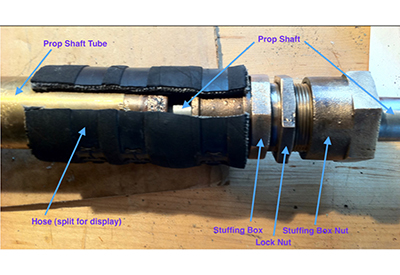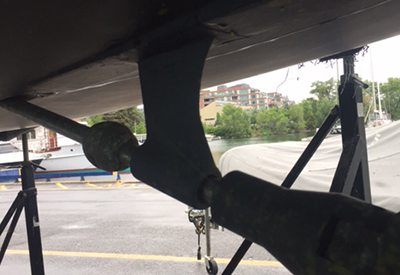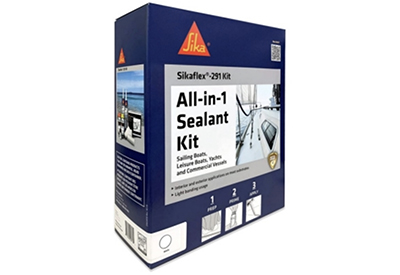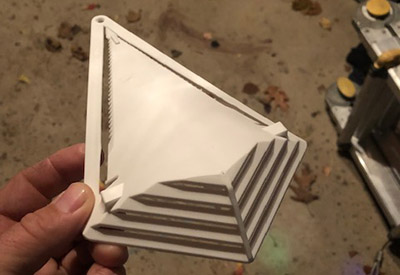Ask Andrew: Late spring start-ups
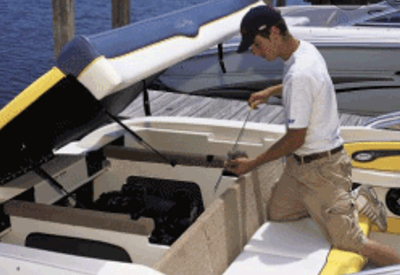
May 14, 2020
performing engine checks before start-up
These days, the internet is full of memes with the message of ‘we’re all in this together’. As a marine mechanic, I’ve been partial to the phrases that reference boating. My favourite so far has been ‘We’re not all is the same boat, but we are all in the same storm’.
This is as true from a COVID-19 pandemic as it is from a delayed launch perspective: We all have different boats, but most of us are dry-docked until the curve is flattened appropriately to allow the Country to re-open to recreational activities. this week’s column is a brief guide in tackling the most important maintenance issues aboard once access is fully allowed.
 water accumulation in the bilge of a boat – removing this should be your first priority
water accumulation in the bilge of a boat – removing this should be your first priority
For all of us – the most pressing concern will be any water accumulation, and the associated potential structural damage. Any leaks in tarps, shrink-wrap or hatches may allow water to enter the boat and collect in the bilge. If you haven’t been allowed access to your boat to check on water accumulation, this should be your first priority once access is possible. Remove or clear any drains, use pumps (electric or manual) to empty the bilges, and check for any damage.
For most of us, power is a necessity – both to start the engine, and to power any appliances. Check the batteries. This can be done using a multimeter set to check voltage. In order to power most equipment, and to start the engine, batteries should read between 12 and 13.5 volts. A marine mechanic may take this a step further and do a load test – which will measure the amperage output, as well as the voltage potential. The battery may need to be re-charged or reconditioned – check on this first, and get the process started if maintenance is required, because power will be needed in subsequent steps.
 The single most expensive part of most boats is the engine. Check on this next. Before turning the key to see if it starts, perform some visual checks: check the oil dipstick and observe the level and colour. Remove the spark plugs, check their condition and clean the ends. Remove/replace fuel filters as necessary. Drain the antifreeze used in winterizing and dispose of it appropriately. In any outboard or stern-drive, check the lower unit oil and observe the level and colour. Run water to the engine and try starting and running the engine. Ensure it turns on/off, and shifts into forward and reverse appropriately. Check the emergency kill switch.
The single most expensive part of most boats is the engine. Check on this next. Before turning the key to see if it starts, perform some visual checks: check the oil dipstick and observe the level and colour. Remove the spark plugs, check their condition and clean the ends. Remove/replace fuel filters as necessary. Drain the antifreeze used in winterizing and dispose of it appropriately. In any outboard or stern-drive, check the lower unit oil and observe the level and colour. Run water to the engine and try starting and running the engine. Ensure it turns on/off, and shifts into forward and reverse appropriately. Check the emergency kill switch.
If the boat has a potable water system, add a cleaning agent to the water tank and flush it through the lines. Flush the system with fresh water and check for any leaks at corners, connections and faucets. Ensure that the hot water tank (if installed) is connected appropriately (especially important after winterizing), and check for leaks and heating operation.
Remove shrink-wrap and dispose of it appropriately. In most cases, this involves the cutting out and removal of any strapping, and bundling excess plastic together for recycling.
 spring cleaning
spring cleaning
Finally, tackle the more cosmetic jobs needed prior to launch. This includes bottom-prep for antifouling, antifoul application, hull polishing, repair of any fiberglass or gelcoat damage from the 2019 season, and cleaning of decks, cabins, berths, galley and head.
Maintenance chores may take a bit longer this season. The delayed launch may mean that mildew or mould has accumulated under tarps and shrink wrap, as heat and condensation has had a greater chance of causing havoc. You may want to take some extra time and effort in cleaning, followed by touching up sealants, caulking and topside paint. It may also be a worthwhile pursuit to clean and oil any teak surfaces, or to renew varnish.
As with my message last edition: I hope this addresses concerns, and separates the ‘essential/emergency’ items from those that can wait. Wherever possible, follow the directives of local, provincial and federal governments: Sit tight and stay home. We’re not all in the same boat, but we are in the same storm.
 Andrew McDonald is the owner of Lakeside Marine Services – a boat repair/maintenance firm based in Toronto. Andrew has worked in the marine industry for 12 years and is a graduate of the Georgian College ‘Mechanical Techniques – Marine Engine Mechanic’ program.
Andrew McDonald is the owner of Lakeside Marine Services – a boat repair/maintenance firm based in Toronto. Andrew has worked in the marine industry for 12 years and is a graduate of the Georgian College ‘Mechanical Techniques – Marine Engine Mechanic’ program.
Questions or comments for Andrew? Email him directly via: askandrew@lakesidemarineservices.ca



